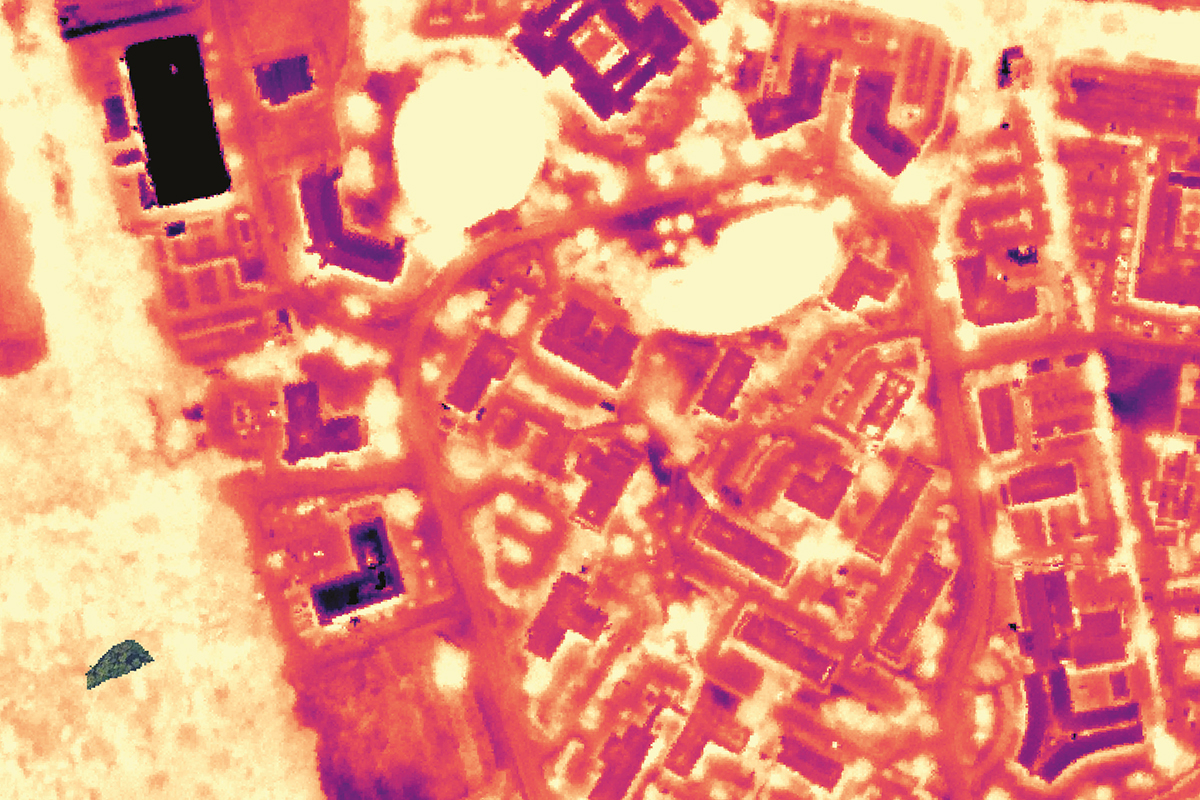
Surrey Research Park is home to Surrey Satellite Technology Ltd, who are building cutting-edge satellites to achieve net zero
It’s impossible to ignore the climate change emergency. To keep global warming below 1.5°C, emissions need to be reduced by 45% by 2030 and reach net zero by 2050. Improving energy efficiency should be the priority for businesses looking to save money on energy bills and make the net zero transition.
British Earth Observation company Satellite Vu is helping organisations tackle these pressing issues; its cutting-edge thermal imaging satellites are revolutionising how energy is measured.
The UK-based satellite technology specialist is bringing the highest resolution thermal data to enable us to see the world like never before. Through its planned constellation of heat-sensing satellites, Satellite Vu will be able to monitor the temperature of any built and natural environment on the planet in near real-time using a new mid-wave infrared camera, providing valuable insights into economic activity, energy efficiency and disaster response.
The satellites are being constructed by Surrey Satellite Technology Ltd (SSTL), which has been building small satellites for more than 40 years from its base at Surrey Research Park in Guildford. The first satellite is set to make its launch in June 2023 on a Falcon 9 rocket, operated by Elon Musk’s SpaceX company, and a further seven will go into orbit over the next two to three years.
In essence, Satellite Vu will become the world’s thermometer from space. The applications of the technology are extensive – from alleviating the effect of heat islands in inner cities and monitoring the pollution of waterways from industrial processes, to reducing the cost of heating buildings, ensuring buildings are energy efficient and assessing the activity status of solar farms and other industrial facilities.
The Satellite Vu team is on a mission to support public and private sector organisations in becoming more climate resilient. The key focus is using less gas and electricity to heat buildings, while validating and improving the Energy Performance Certificate (EPC) ratings of properties. This, they say, is the first step towards decarbonising the whole sector and eventually moving towards more secure and renewable sources of energy.
When looking at building heat loss, the thermal satellite technology can give an accurate image of where to implement energy optimisation investments, offering substantial cost-saving benefits.
“A lot of companies and authorities want to make improvements in the way we use energy and generate heat, but they need to know exactly where to direct their efforts,” says Anthony Baker, Co-founder and CEO of Satellite Vu. “By giving them precise data about where heat is being allowed to spill out of buildings into the open, we believe we can help them make a real difference and save energy.”
Surrey Research Park is already harnessing Satellite Vu’s high resolution infrared technology. Spanning 70 acres and home to more than 200 technology, science and engineering businesses, the Park has begun working with Satellite Vu to capture thermal imagery of its buildings to help target and assess energy efficiency improvements as well as provide tenants with feedback on operational energy use.
Satellite Vu is conducting a five-stage programme consisting of an aerial thermal imaging campaign, data processing, thermal analysis, energy consumption modelling and interactive real-time data presentation. The data will be used to validate EPCs for buildings in the Park, which currently span EPC B – E, and to monitor performance of retrofit upgrades over time given the importance of sustainability to SRP customers, in addition to proposed legislation on building energy efficiency.
Anthony explains, “Climate technology remains key for organisations to achieve net zero through retrofitting action, and our project with Surrey Research Park represents a scalable solution to this issue; opening opportunities at every campus or industrial park in the UK, and a blueprint for housing associations and portfolio owners.”
Since its inception in 2016, Satellite Vu has raised £20 million in Series A investment. The company was also the recipient of two National Space Innovation Programme (NSIP) grants from the UK Space Agency and a third from the European Space Agency. Now at the scale-up stage, Satellite Vu is looking to introduce more organisations to thermal satellite technology.
There has been a lot of interest so far with the opening of Satellite Vu’s Early Access Option Programme (EAOP), which provides customers and partners with preferred access to Satellite Vu’s imagery products, as well as the opportunity to secure satellite capacity to support operational and business requirements.
Satellite Vu has been working closely with SSTL, and despite supply chain issues, the construction and launch of the first satellite is on track for June. The planned constellation is eight satellites, but if the space industry continues to be sustainable, there is the opportunity to launch more, with even better imagery resolution, Anthony and the team predict.
The scale of commercial activity in outer space is expanding significantly, putting satellite technology innovators like Satellite Vu in a prime position to make real change. A picture can speak a thousand words, and Satellite Vu is confident that its thermal imagery will have a positive effect on customers’ pockets, but most importantly, on our future on our blue planet.




